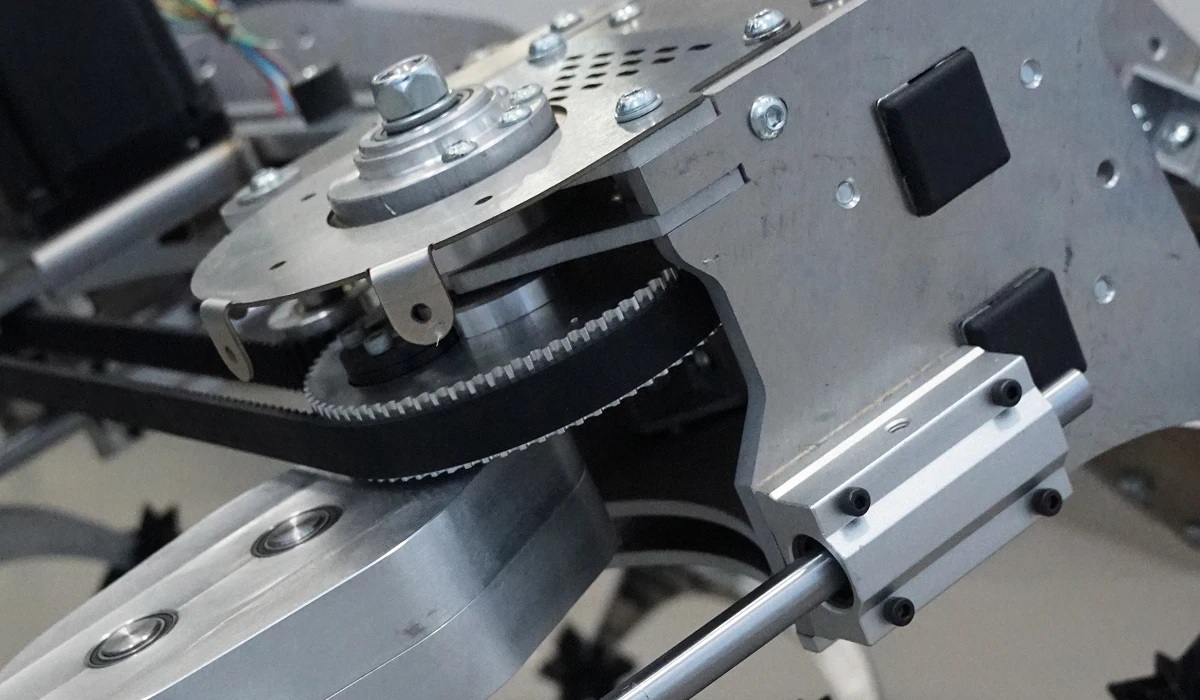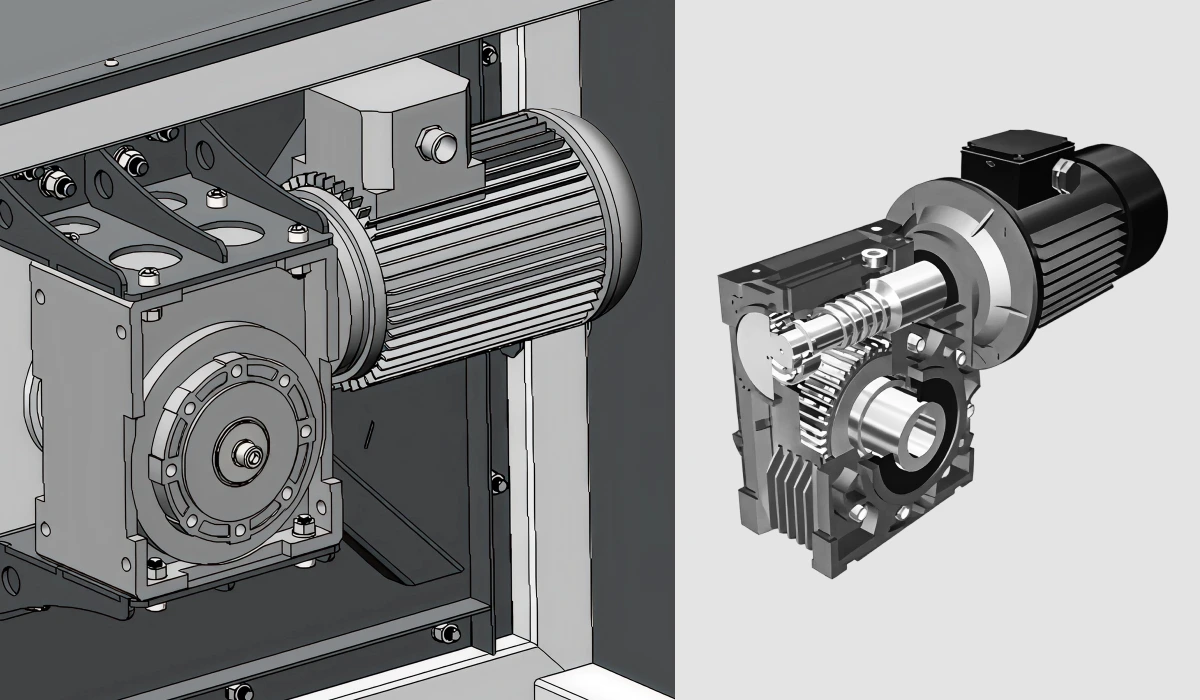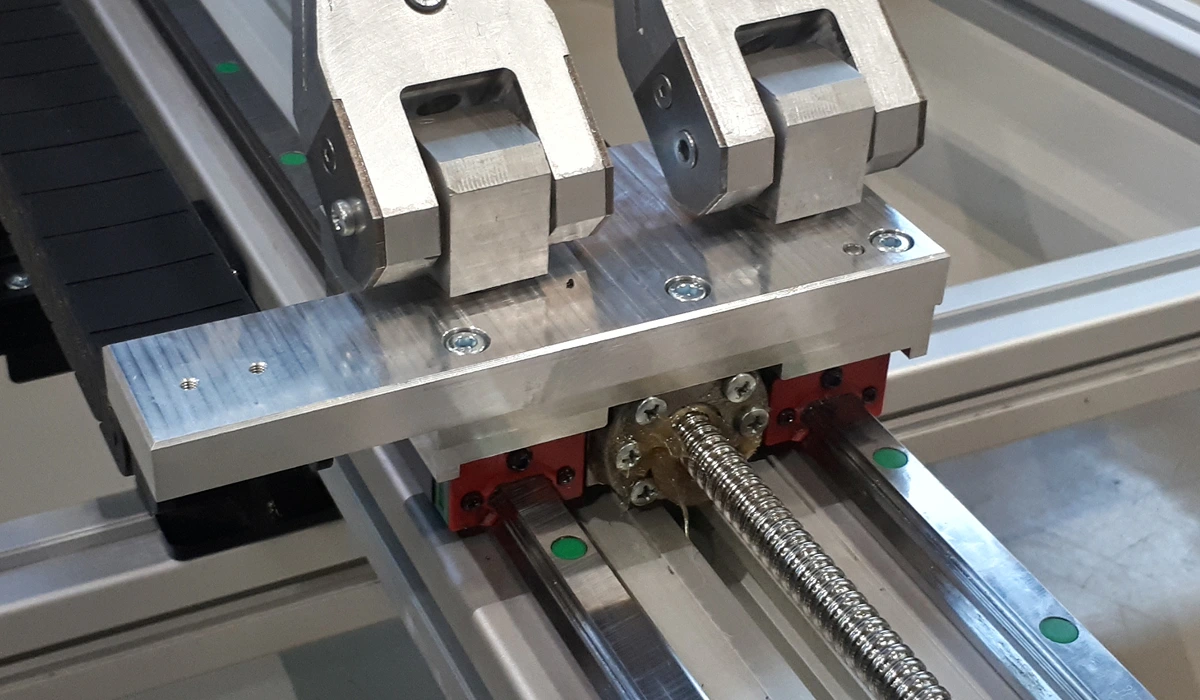Have a project to do?
Fill out the form and a member from our sales team will get back to you
Buckle up for a short, easy-to-digest piece that introduces different motion transmission mechanisms. The article covers brief overviews, use cases, and key characteristics to keep in mind.
If you’re developing a new device (e.g. consumer electronics, medical equipment, or an automated system) you’ll eventually face a question: how will motion be transmitted inside the assembly?
To clarify terms: motion transmission is how one part of a mechanism makes another part move. Your choice of transmission method affects:
This article doesn’t catalog every possible transmission – only the most common ones.
If you’re on a product team without a formal engineering background, this guide should help. It explains motion transmission types in plain terms so you can better follow what your contractor is doing, check that it’s appropriate, and write clearer requirements.
We’ll cover five of the most common approaches. For each, you’ll get the working principle, product examples, and cues that indicate when that transmission is a good fit. That way, you can decide what belongs in your device requirements.

A gear drive transmits rotation between shafts through rigid tooth engagement. The smaller gear (the pinion) drives the larger gear (the wheel), changing speed and torque at the output shaft. The gear ratio stays constant, enabling slip-free, predictable power transfer.
Note. The gear ratio is the ratio of input to output rotational speeds. If the input spins fast and the output spins slower but with higher torque, the ratio is said to be “high.”
Strengths. Gears are compact (micro-motors, precision actuators), can transmit high power (industrial gearboxes, machine tool drives), and support high speeds (fans, motorized spindles). Their constant ratio and high efficiency make them ideal where motion must be stable and predictable (watch movements).
Limitations. Gears don’t span long distances between shafts (e.g., spaced conveyor rollers), are rigid (little vibration damping), can be noisy if poorly manufactured (older industrial gearboxes), and need regular lubrication.
Where and why gears are used:
Signs you likely need gears:

A belt drive uses two pulleys mounted on shafts and a belt that wraps around them. Motion is transmitted by friction between the belt and pulleys created by belt tension.
Two common types:
Strengths. Belts can span relatively large distances between shafts (fans, conveyors). They run smoothly and quietly (e.g., printers), absorb load fluctuations thanks to belt elasticity (sewing machines), and allow protective slip under overload (small appliances). The design is simple and needs no lubrication.
Limitations. Pulleys occupy more space than gears (consider in industrial drives). V-belts can lose synchrony due to slip (small motors, printer carriages). High belt tension increases loads on shafts and bearings (conveyors, grinders). Belts wear and require periodic replacement.
Where and why belts are used:
Signs you likely need a belt drive:

A chain drive transmits rotation from the driving shaft to the driven shaft via a chain that engages sprocket teeth. Because the chain links positively engage the teeth, there’s no slip and speed remains constant. Chain drives can transmit high forces, span larger distances without the slip that can affect belts, and drive multiple shafts simultaneously (conveyors, lifting systems). They also require less tension than belts at high loads and support high ratios.
Limitations. Chain links and joints wear due to repeated tooth contact, so regular lubrication and maintenance are required. Chains generate noise and dynamic loads.
Where and why chains are used:
Signs you likely need a chain drive:

A worm gear uses a screw (worm) driving a worm wheel at 90°. Relative sliding between teeth lowers efficiency and increases wear, but yields smooth, quiet motion, very high reduction ratios, and self-locking: under certain geometries, the wheel cannot back-drive the worm.
Strengths. Large ratios in compact form, smooth and quiet operation, accurate motion transfer, positional holding without separate brakes (self-locking when design conditions are met).
Limitations. Lower efficiency, higher wear and potential for galling, higher material cost (worm/wheel materials), and the need for proper lubrication (more of a requirement than a limitation, but must be planned).
Worm gear applications:
Signs you likely need a worm gear:

A pneumatic cylinder operates by admitting compressed air to one chamber to push a piston. The piston is connected to a rod that does mechanical work. Motion is linear and fast, with quick response to air flow changes.
Strengths. High-speed, repeatable strokes; simple control without complex electronics; oil-free operation in clean environments; easy to tie into a plant air system.
Limitations. Available force is limited by air pressure and piston area (unsuitable for very heavy loads). Requires clean, dry air; without filtration, sticking and accelerated wear are likely. Positioning accuracy is limited: precise stops are typically achieved with hard stops at end positions; precise mid-stroke stopping is not practical without special measures.
Where and why pneumatics are used:
Signs you likely need pneumatics:

A hydraulic cylinder uses pressurized fluid acting on a piston. Fluid flows through hydraulic lines to push the piston and rod, producing smooth, powerful linear motion. Flow controls speed; pressure sets force. Because hydraulic fluid is (effectively) incompressible, hydraulics can move and hold heavy loads.
Strengths. Accurate linear motion, smooth movement of heavy loads, and load-holding via valves and circuit design. Excellent for high forces with controlled speed (moving heavy objects smoothly and safely).
Limitations. Systems are heavy and complex: pump, valves, lines, seals – all must be tight and well maintained to avoid leaks and premature wear. Hydraulic oil also requires cleanliness management.
Where and why hydraulics are used:
Signs you likely need hydraulics:

A ballscrew converts rotary motion to linear motion with high precision. Balls roll in helical grooves between screw and nut, transmitting force without slip. As the screw turns, balls drive the nut and then recirculate through return channels. Preload can be applied to remove backlash, increasing axial stiffness and positioning accuracy.
Strengths. High axial force capacity (e.g., up to ~10 kN in compact forms), repeatability on the order of ±0.01 mm, minimal backlash (≤0.02 mm), critical for precision machining, industrial 3D printing, and robotics. Low friction losses (efficiency ≥ 0.9), compact for the load capacity, and long life (millions of cycles).
Limitations. Screw and nut take space and require proper mounting; return channels must be protected from contamination. Tight manufacturing tolerances are essential. Poor quality leads to backlash or premature wear. Installation and use must follow the manufacturer’s guidance (not a flaw per se, but a real requirement).
Where and why ballscrews are used:
Signs you likely need a ballscrew:
Fresh, cool, new insights from EnCata in engineering every month